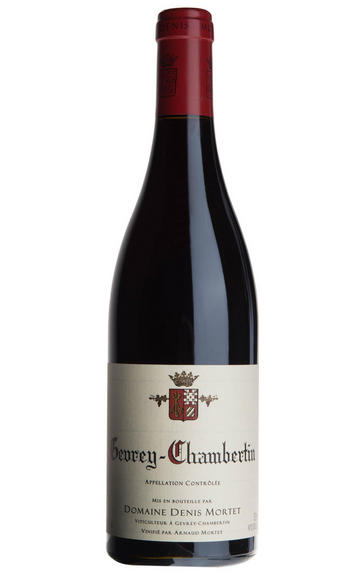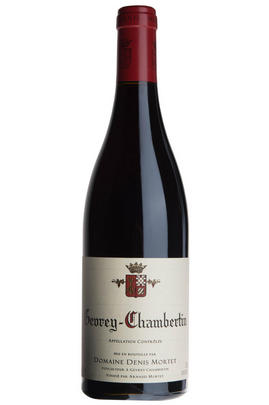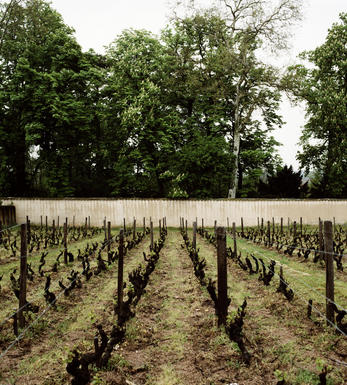
2015 Gevrey-Chambertin, 1er Cru, Domaine Denis Mortet, Burgundy

Critics reviews
Neal Martin - 30/12/2016
About this WINE

Denis Mortet
Domaine Denis Mortet in Burgundy was founded by Denis Mortet in the early 1990s. He died at the age of 51, after taking his own life in January 2006. In his brief, but highly acclaimed passage from the winemaking scene, he rose to become a colossal figure in Burgundy, fashioning wines from relatively modest vineyard holdings which punch far above their weight. He rose to fame with an exceptional range of wines from the 1993 vintage.
He believed with a deep passion that the work in the vineyard was everything. But there was an essential contradiction to his work: he yearned to make wines of finesse and style, but everything he did in the vineyard and cellar tended towards sumptuous wines of almost unparalleled weight and opulence, which achieved cult status and a devoted following. But the harder he drove himself, the further from his stated aim he went. Only now, under son Arnaud and the watchful eye of his mother Laurence, are the wines achieving the minerality and elegance (and seemingly without sacrificing weight) that Denis sought.
At the domaine everything starts in the vineyard, where every measure is taken to produce the finest, ripest fruit possible, creating a style of wine which, as Denis used to say is "a pleasure to drink young or old." This is an estate of young vines - 25 years old - and where village wines are tended as if they were a Grand Cru; thus all the reds see 100% new oak. Denis Mortet's immaculate vineyards are the key and no stone is left unturned in the pursuit of excellence.
The number of cuvées of village Gevrey has fluctuated in recent years. It was reduced to just one in 2005, two in 2006 and then expanded again to four in 2007: Gevrey on its own, Combes Dessus, En Champs and vieilles vignes. Other cuvées which have appeared from time to time include En Motrot, En Derée and Au Vellé.
The Domaine's 10 hectares encompass 14 different Appellations, including two Grands Crus - Clos-de-Vougeot and Chambertin - and are a far cry from the days of his father, Charles, who started off with only one hectare.
Jasper Morris MW, Burgundy Wine Director and author of the award-winning Inside Burgundy comprehensive handbook.

Gevrey-Chambertin
Gevrey-Chambertin is the largest wine-producing village in Burgundy’s Côte d'Or, with its vineyards spilling over into the next door commune of Brochon.
Located in the far north of the Côtes de Nuits above Morey-St Denis, classic Gevrey-Chambertin is typically deeper in colour, firmer in body and more tannic in structure than most red Burgundy. The best can develop into the richest, most complete and long-lived Pinot Noir in the world. This is largely thanks to the iron-rich clay soils, though much depends on whether the vineyard is located on either the steeper slopes (Evocelles, Clos St Jacques) or the flatter, richer soils (Clos Prieur, Combottes).
Whereas in the past there have been numerous underperformers in Gevrey-Chambertin exploiting the reputation of this famous village and its iconic Grands Crus, today there are many fine sources to choose from, and overall quality is higher than ever.
Gevrey-Chambertin’s greatest Grand Cru is named after the field of the monk Bertin (Champ de Bertin). In 1847, Gevrey appended the name of this illustrious vineyard, Chambertin, setting a trend for the other principle villages to follow. Le Chambertin may not be quite as sumptuous as Musigny or Richebourg, or as divinely elegant as La Tâche or Romanée-St Vivant, but it is matched only by the legendary Romanée-Conti for completeness and luscious intensity.
In all, Gevrey boasts an impressive nine Grands Crus, with the name of Chambertin retaining a regal omnipresence throughout its finest vineyard names. The other truly great Grand Cru is Chambertin-Clos de Bèze which has the right to sell its wines simply as ‘Chambertin’, and is the only wine allowed to put the Chambertin name before, rather than after, its own. Situated slightly further up the hill, the wines are fractionally less powerful yet full of sensual charm and finesse.
Quality-wise the next best are generally acknowledged to be Mazis-Chambertin and Latricières-Chambertin. The former is incredibly concentrated and very fine, but its structure is a little less firm than Le Chambertin. Latricières is less about power (although it can be explosively fruity) and more about an entrancing silkiness.
Situated slightly higher up the slope, Ruchottes-Chambertin is impressively rich, stylish and slightly angular. The tiny Griottes-Chambertin, which owes its name to the grill-pan shape of the vineyard rather than the wine’s griotte cherry aroma, is lower down the slope and boasts a velvety texture and rich fruit reminiscent of Chambertin itself. It is generally better than the lighter, although wonderfully fragrant Chapelle-Chambertin and Gevrey’s largest Grand Cru, the pure and seductive (if variable) Charmes-Chambertin.
Gevrey also has some outstanding Premier Crus on the south-east-facing slopes above the town. Les Cazetiers and especially Clos St Jacques produce some exceptional wines. Indeed Armand Rousseau, who pioneered domaine bottling here in the 1930s and is still one of the region’s very best producers, often sells his Clos St Jacques for more than several of his Grand Crus.
Drinking dates for these wines vary, but Grand Crus are generally best from at least 10 to 25 years, Premier Crus from eight to 20 years, and village wines from five to 12 years.
- 315 hectares of village Gevrey Chambertin
- 84 hectares of Premier Cru vineyards (20 in all). The foremost vineyards include Clos St Jacques, Lavaux St Jacques, Combottes, Corbeaux, Cherbaudes, Cazetiers.
- 55 hectares of Grand Cru vineyards: Chambertin, Chambertin Clos de Bèze, Latricières-Chambertin, Ruchottes-Chambertin, Mazis-Chambertin, Charmes-Chambertin, Mazoyères-Chambertin, Chapelle-Chambertin, Griottes-Chambertin..
- Recommended producers: Bachelet, Dugat, Esmonin, Mortet, Rossignol Trapet, Rousseau, Serafin, Bernstein
- Recommended restaurants : Chez Guy (good wine list), Rôtisserie du Chambertin (and Bistro)

Pinot Noir
Pinot Noir is probably the most frustrating, and at times infuriating, wine grape in the world. However when it is successful, it can produce some of the most sublime wines known to man. This thin-skinned grape which grows in small, tight bunches performs well on well-drained, deepish limestone based subsoils as are found on Burgundy's Côte d'Or.
Pinot Noir is more susceptible than other varieties to over cropping - concentration and varietal character disappear rapidly if yields are excessive and yields as little as 25hl/ha are the norm for some climats of the Côte d`Or.
Because of the thinness of the skins, Pinot Noir wines are lighter in colour, body and tannins. However the best wines have grip, complexity and an intensity of fruit seldom found in wine from other grapes. Young Pinot Noir can smell almost sweet, redolent with freshly crushed raspberries, cherries and redcurrants. When mature, the best wines develop a sensuous, silky mouth feel with the fruit flavours deepening and gamey "sous-bois" nuances emerging.
The best examples are still found in Burgundy, although Pinot Noir`s key role in Champagne should not be forgotten. It is grown throughout the world with notable success in the Carneros and Russian River Valley districts of California, and the Martinborough and Central Otago regions of New Zealand.


Buying options
Add to wishlist
Description
The fruit for this comes from Les Cherbaudes, Belair and Petite Chapelle. Floral and dark raspberry notes, with a touch of clove oil and spice, play on the nose. Happily this isn’t over luscious on the palate, with marvellous texture, precision and length. Gentle waves of fruit reverberate around the mouth, this is very impressive. Drink 2021-2029.
Jasper Morris MW, Wine Buyer
Arnaud Mortet has been joined by his sister Clémence and there will be more vineyards on stream from 2016 as they have set up a small business to manage some new appellations. They started to pick the 2015 crop very early in September. There are two changes this year: a reduction in the percentage of new oak, a continuing feature here, and the use of a fair proportion of whole bunches, 40 to 50 percent unless otherwise stated, which is specific to the vintage.
wine at a glance
Delivery and quality guarantee